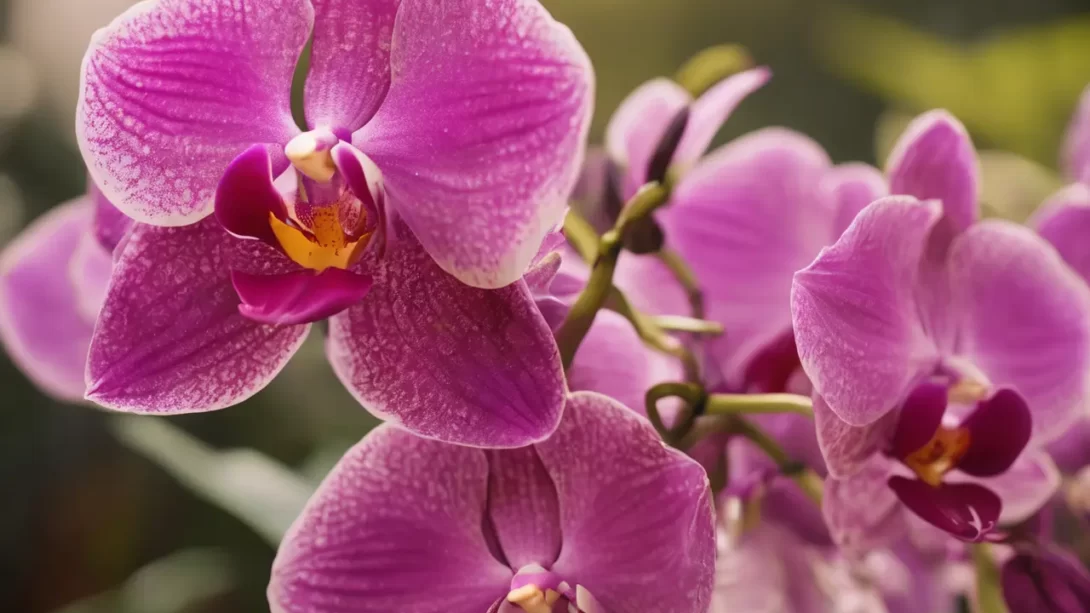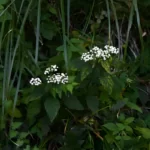Orchids are renowned for their exotic beauty and variety, making them a favorite among houseplant enthusiasts. However, the appearance of yellow leaves can be a cause for concern for many orchid owners. Understanding the reasons behind this common issue is key to maintaining healthy and vibrant orchids. This article delves into the various factors that can lead to yellowing leaves in these delicate plants.
The Orchid Biology
To comprehend why orchid leaves turn yellow, it’s important to have a basic understanding of orchid biology. Orchids are unique in their growth and nutritional needs compared to other houseplants. The leaves of an orchid play a crucial role in photosynthesis, the process by which the plant converts light into the energy it needs to grow. Healthy leaves are vital for the overall health and flowering capability of the orchid.
Common Causes of Yellowing Leaves in Orchids
Orchid leaves can turn yellow for several reasons, ranging from natural lifecycle processes to care-related issues. Identifying the cause is essential for addressing the problem effectively. The most common causes include watering issues, improper light exposure, nutritional deficiencies, temperature stress, and health of the root system.
Watering Issues
Watering practices are often at the heart of why orchid leaves turn yellow. Both overwatering and underwatering can cause stress to orchids, leading to yellow leaves.
- Overwatering: Orchids are susceptible to root rot when left in standing water or when watered too frequently. Soggy potting medium can suffocate the roots, preventing them from absorbing nutrients and water, and leading to yellowing leaves.
- Underwatering: Conversely, if orchids do not receive enough water, their leaves can become dehydrated, lose their green color, and turn yellow.
Proper watering techniques are crucial for orchid health. This involves understanding the specific water requirements of your orchid type and ensuring good drainage in the pot.
Light Exposure
Light is another critical factor in the health of orchids:
- Insufficient Light: Orchids that don’t receive enough light can develop pale, yellow leaves. This is a sign that the plant is not able to photosynthesize effectively.
- Excessive Light: Too much direct sunlight can scorch orchid leaves, causing them to turn yellow or develop burnt spots.
Providing the right amount of light, which typically means bright, indirect sunlight, is key to preventing yellow leaves due to lighting issues. The specific light needs can vary among different orchid species.
Nutritional Deficiencies or Imbalances
Just like any other plant, orchids require certain nutrients to thrive. Yellowing leaves can often be a sign of nutritional issues:
- Deficiencies: A lack of essential nutrients, such as nitrogen, potassium, or magnesium, can lead to yellowing leaves. Orchids need a balanced fertilizer formulated for their specific needs.
- Imbalances: Over-fertilization can also cause problems. Excessive nutrients can build up in the soil, potentially leading to root burn and yellowing leaves.
It’s important to use a fertilizer designed for orchids and to follow the recommended frequency and dosage. Over time, flushing the potting medium with water can help remove excess salt buildup from fertilizers.
Temperature Stress
Orchids are sensitive to temperature changes and prefer a stable environment:
- Cold Stress: Exposure to cold drafts or temperatures below the orchid’s tolerance level can cause leaves to turn yellow.
- Heat Stress: Similarly, too much heat or sudden temperature fluctuations can stress the plant, leading to yellowing leaves.
Maintaining a consistent temperature within the preferred range for your specific orchid species is crucial. Avoid placing orchids near heating or cooling vents and protect them from sudden temperature changes.
Root Health and Potting Medium
The health of an orchid’s roots is directly linked to the condition of its leaves:
- Root Rot: Overwatering can lead to root rot, a common cause of yellow leaves. Healthy orchid roots should be firm and green or white, not mushy or brown.
- Potting Medium Breakdown: Over time, the potting medium can break down and compact, reducing aeration and drainage. This can affect root health and lead to yellowing leaves.
Regularly inspecting the roots and repotting in fresh orchid-specific medium every few years can help maintain root health. Ensuring the pot has adequate drainage is also essential to prevent waterlogged conditions.
Natural Aging Process
It’s important to note that yellowing leaves can sometimes be a part of the orchid’s natural lifecycle:
- Older Leaves: As orchids grow, older leaves can naturally turn yellow and drop off, making way for new growth. This is a normal process and not typically a cause for concern.
- Distinguishing Aging from Other Issues: If the yellowing leaves are at the bottom of the plant and the rest of the plant appears healthy, it’s likely just natural aging. However, if multiple leaves or newer leaves are yellowing, it may indicate one of the previously mentioned issues.
Understanding this natural process can help orchid owners avoid unnecessary worry and over-treatment of their plants.
Disease and Pest Infestations
Diseases and pests can also cause yellowing in orchid leaves:
- Fungal and Bacterial Diseases: Conditions like root rot or leaf spot diseases can lead to yellow leaves. These are often exacerbated by overwatering or poor air circulation.
- Pests: Pests such as scale, mites, or aphids can stress the orchid, causing leaves to yellow. These pests typically feed on the sap of the plant, weakening it over time.
Regular inspections for pests and signs of disease can help catch these issues early. Treatment options include pruning affected areas, improving environmental conditions, and using appropriate pest control methods.
Environmental Stressors
Other environmental factors can contribute to yellowing leaves:
- Air Quality: Pollutants or chemicals in the air, including tobacco smoke or volatile organic compounds from paints and solvents, can affect orchid health.
- Humidity Levels: Orchids generally prefer higher humidity levels. Low humidity can lead to dehydration and yellowing leaves.
Creating an optimal growing environment, including maintaining adequate humidity and ensuring clean air, is important for keeping orchids healthy.
Conclusion
Yellowing leaves in orchids can be caused by a variety of factors, including watering issues, light exposure, nutritional deficiencies, temperature stress, root health, natural aging, diseases, pests, and environmental stressors. Understanding these factors is key to effectively addressing the problem and maintaining the health of your orchid. Regular observation and proper care tailored to the specific needs of your orchid can prevent most causes of yellowing leaves, ensuring that your orchid remains a vibrant and beautiful part of your home. Remember, each orchid species may have unique requirements, and being attentive to these needs is essential for their thriving growth.



